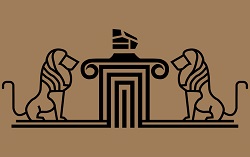Vratsa derives its name from the largest city in northwestern Bulgaria. The stone is actively quarried in the Vratsa district, particularly around the villages of Gorna Kremena and Varbeshnitsa.
Vratsa is a very robust and frost-resistant stone, a fact that explains why it is so often a familiar sight in many countries of central and northern Europe. Engineers and architects have been using it as construction and facing stone since the late 19th century.
Its real boom, however, started in the 1990s, and it has been exported all over the world since then. Many famous, official buildings employed the stone, among them, for example, the Leopold Museum in Vienna, Bulgaria’s National Bank, or the Shri Swaminarayan Mandir Hindu Temple in London.
Geologically, Vratsa is a cretaceous, siliceous limestone. Typical colours are cream and beige, often with slightly darker patches scattered across the stone. Its characteristics make it an excellent choice for both indoor and outdoor applications, such as flooring, cladding, sculptures, monuments, and more.
Kallisthos offers Vratsa stones directly from the quarries and factories, so do not hesitate to contact us to discuss your needs and requirements!



